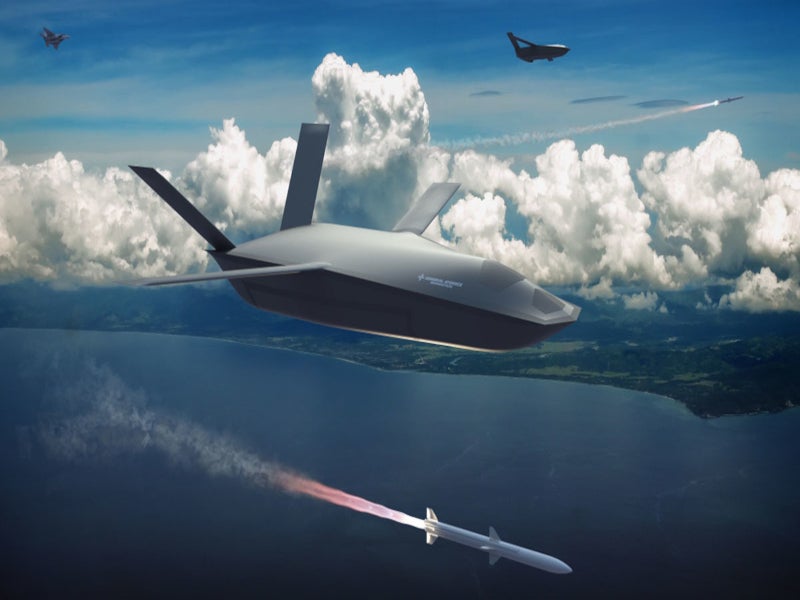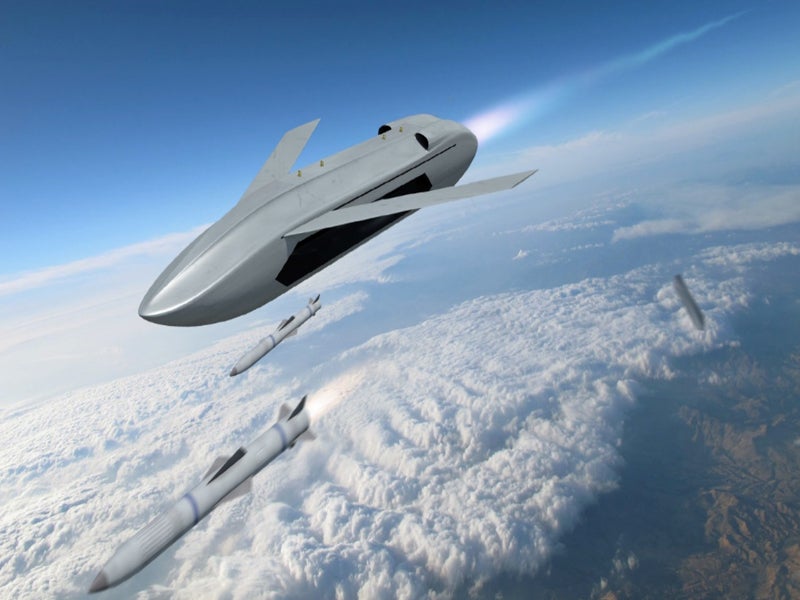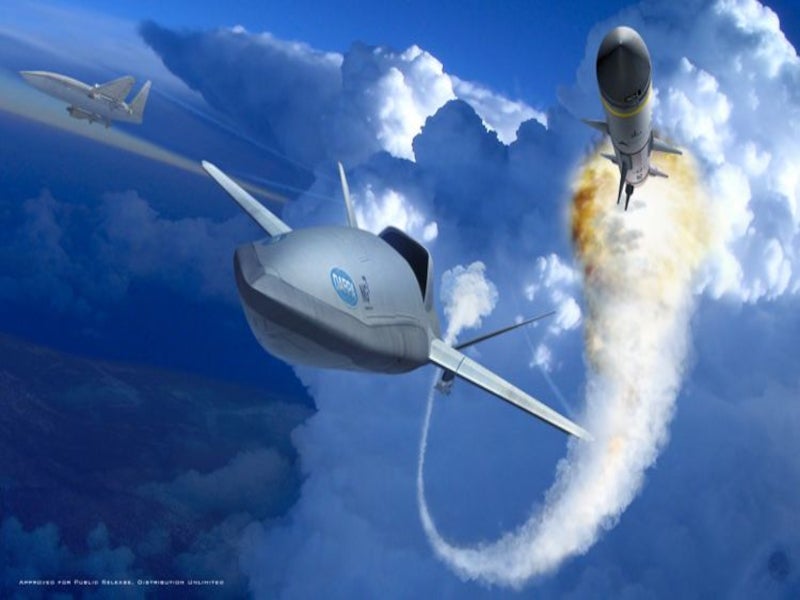LongShot is an air-launched uncrewed aerial vehicle (UAV) being developed by General Atomics Aeronautical Systems (GA-ASI).
The UAV is part of the LongShot programme led by the Defence Advanced Research Projects Agency (Darpa), a research and development agency of the US Department of Defense.
The LongShot UAV will enhance the capability of manned aircraft, such as fighters and bombers, to penetrate deep into enemy territory and engage enemy aircraft and defences.
Darpa’s LongShot programme objective
The LongShot programme aims to transform the established framework of air combat operations by developing an air-launched UAV capable of effectively deploying multiple existing and future air-to-air weapons.
The programme encompasses the comprehensive design, fabrication, and rigorous flight testing of a demonstrative system to substantiate the viability and potential of the LongShot concept.
The UAV is expected to reduce the risk to manned aircraft and substantially improve weapon engagement range and mission effectiveness.
LongShot UAV development details
In February 2021, Darpa awarded contracts to defence companies General Atomics, Lockheed Martin, and Northrop Grumman for the first phase of the programme, in which the companies created the preliminary designs for the UAV.
General Atomics affiliate GA-ASI was selected by Darpa to enter the second phase of the programme in March 2022, following a successful preliminary design review (PDR) in February 2022.
The detailed designs of the UAV were completed, and ground tests were performed to reduce the programme risk during the second phase.
A multi-body wind tunnel test, characterising the separation of the LongShot UAV and an air-to-air weapon was also carried out during this phase. Additional ground tests will demonstrate the viability of the key subsystems.
The critical design review (CDR) for the programme is expected in 2023, which will mark the completion of the second phase of the programme.
GA-ASI is currently preparing a proposal response for the third phase of the programme, which will involve prototype manufacturing and flight testing.
A full-scale air-launched system capable of controlled flight before, during, and after the ejection of a weapon under operational conditions will be constructed and flown during the third phase. The flight testing is expected to begin in 2024.
LongShot UAV design and details
The LongShot drone features a sleek and stealthy design, characterised by a distinctive chine running along the centre of its fuselage. The chine seamlessly converges towards a high-mounted fixed wing, which exhibits a moderate sweep.
The drone features a prominent V-shaped tail, multi-modal propulsion, and a weapons bay on the side of the rear fuselage with two doors. It will be launched from a larger uncrewed aerial system or aircraft such as an external hardpoint on a fighter or the internal bay on a bomber.
The UAV will allow manned aircraft to stay back at standoff distances while the drone will move forward and strike multiple targets using its own air-to-air missiles.
LongShot UAV capabilities
LongShot will be capable of venturing into hostile airspace and effectively engaging enemy targets within a short time thereby offering commanders unprecedented flexibility with a range of strategic options during air combat.
It will be able to conduct a fighter sweep ahead of a strike wave, a manoeuvre that traditionally poses significant risks to human crews. Furthermore, it can join human-crewed aircraft on a mission, effectively bolstering the firepower of the forces.
LongShot presents an opportunity to enhance the capabilities of legacy aircraft such as bombers. In the event an allied battle network detects an approaching hostile fighter towards a friendly bomber, it can empower the friendly bomber’s crew to proactively engage the incoming threat without relying on additional escort aircraft or the reassignment of friendly fighters. This will not only safeguard the bomber’s intended targets but also preserve its ability to execute the mission as planned.
LongShot offers versatile functionality and the potential to amplify the offensive capabilities of various aircraft.










